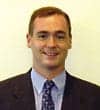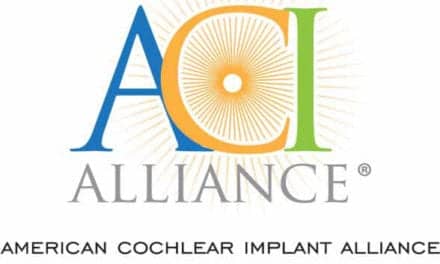Vanderbilt University Medical Center recently received a $3.9 million grant from the National Institutes of Health (NIH) to improve outcomes for children with significant hearing loss by providing individualized, prescription-like programming for their cochlear implants. An article detailing the study was published by the VUMC Reporter, the Vanderbilt University Medical Center’s Office of News & Communications’ media outlet.
The study, led by researchers from VUMC’s Departments of Hearing and Speech Sciences and Otolaryngology-Head and Neck Surgery and Vanderbilt University’s School of Engineering, aims to determine whether the approach will impact a child’s ability to acquire speech, language, and literacy skills.
According to the study’s principal investigators, Rene Gifford, PhD, and Stephen Camarata, PhD, children currently receive the same type of cochlear implant programming as adults even though a child’s ability to process speech information and discriminate pitch is much less developed.

Rene Gifford, PhD, works with patient Davy Hillis to program his cochlear implant. (photo by John Russell).
“We’ve taken what we know about programming cochlear implants for adults and applied that to children, and it has worked reasonably well,” said Gifford. “But the issue is that we aren’t using our underlying knowledge of what the child is actually doing with that signal to acquire language and develop literacy skills.”
Because the pitches that come through cochlear implants are not as finely resolved as the ones received through a normal hearing ear, children are using an impoverished signal and a less-than-full pitch range as their sole auditory source to develop speech and language.
“Adults have a well-defined pitch map in their brain, so if you give them a little bit of information from different sources, they can fill in the rest. Children don’t have that,” said Camarata. “So, our question is: Is it reasonable to apply these adult data to children who haven’t yet developed that system? And, more importantly, can we improve outcomes by individualizing input?”
To create a personalized programming approach, the research team, which also includes Benoit Dawant, PhD, Jack Noble, PhD, and Robert Labadie, MD, PhD, MMHC, as co-investigators, will compare pre- and post-operative computed tomography (CT) scans to map out the patient’s electrode array and interface to determine whether the electrodes align at a uniform distance from the neurons in the cochlea. The further each electrode is from the nearest group of auditory neurons, the greater the electrical charge needs to be to achieve auditory perception.
As the charge increases, the spread of electrical excitation becomes broader, potentially causing interference of the signal rather than usable information.
“If you have an electrode that’s farther away from the neurons and you have to boost the signal level for detection, that signal will spread and make it more difficult for the listener to discriminate pitch,” said Camarata.
Once these gaps are identified, the team can selectively deactivate interfering electrodes in the cochlear implant, optimizing it for each patient based on individual anatomy and electrode placement. As a result, Gifford and Camarata hypothesize that children will be able to take better advantage of both pitch and timing information.
“This study has the potential to revolutionize audiology because right now we’re treating cochlear implants like they’re a one-size-fits-all device,” said Gifford.
An internal seed grant from the Vanderbilt Bill Wilkerson Center allowed the team to test and obtain preliminary data on 36 children, of which the majority showed significant improvement in auditory perception and speech production. A few children showed no noticeable benefit, and none of the children performed worse because of the programming change.
“We know that children aren’t just ‘little adults,’ but it is not always easy to determine how to individualize our treatments to account for their unique characteristics,” said Anne Marie Tharpe, PhD, chair of the Department of Hearing and Speech Sciences.
“This team has made some big steps in personalizing the cochlear implant mapping process for these young patients with hearing loss who have the potential to result in significant improvements in developmental outcomes.”
Beyond its potential clinical impact, the study serves as an example of how partnerships across the Vanderbilt campus drive innovation and discovery.
“Dr Wilkerson, our center’s founder, dreamed that one day deaf children could communicate verbally,” said Roland Eavey, MD, Guy M. Maness Professor and chair of otolaryngology and director of the Vanderbilt Bill Wilkerson Center. “He would have been very proud of this combined effort.”
Enrollment for the study will begin in the late spring 2019.
Source: VUMC Reporter
Image: VUMC, John Russell




